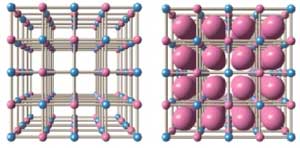| Feb 12, 2020 | |
Something from nothing: Using waste heat to power electronics(Nanowerk News) Collecting energy from environmental waste heat such as that lost from the human body is an attractive prospect to power small electronics sustainably. A thermocell is a type of energy-harvesting device that converts environmental heat into electricity through the thermal charging effect. |
|
| Although thermocells are inexpensive and efficient, so far only low output voltages—just tens of millivolts (mV)—have been achieved and these voltages also depend on temperature. | |
| These drawbacks need to be addressed for thermocells to reliably power electronics and contribute to the development of a sustainable society. | |
| A University of Tsukuba-led research team recently improved the energy-harvesting performance of thermocells, bringing this technology a step closer to commercialization. Their findings are published in Scientific Reports ("Energy harvesting thermocell with use of phase transition"). | |
 |
|
| Crystal structure of cobalt Prussian blue analog LixCo[Fe(CN)6]y. The left figure shows the time of complete charge, and the right figure shows the time of complete discharge. Large red circle, small blue circle, small red circle indicate lithium ion, cobalt ion, iron ion, respectively. (Image: University of Tsukuba) | |
| The team developed a thermocell containing a material that exhibited a temperature-induced phase transition of its crystal structure. Just above room temperature, the atoms in this solid material rearranged to form a different crystal structure. This phase transition resulted in an increase in output voltage from zero to around 120 mV, representing a considerable performance improvement over that of existing thermocells. | |
| “The temperature-induced phase transition of our material caused its volume to increase,” explains Professor Yutaka Moritomo, senior author of the study. “This in turn raised the output voltage of the thermocell.” | |
| The researchers were able to finely tune the phase transition temperature of their material so that it lay just above room temperature. When a thermocell containing this material was heated above this temperature, the phase transition of the material was induced, which led to a substantial rise of the output voltage from zero at low temperature to around 120 mV at 50 °C. | |
| As well as tackling the problem of low output voltage, the thermocell containing the phase transition material also overcame the issue of a temperature-dependent output voltage. Because the increase of the output voltage of the thermocell induced by the thermal phase transition was much larger than the temperature-dependent fluctuations of output voltage, these fluctuations could be ignored. | |
| “Our results suggest that thermocell performance can be strongly boosted by including a material that exhibits a phase transition at a suitable temperature,” says Professor Moritomo. “This concept is an attractive way to realize more efficient energy-harvesting devices.” | |
| The research team's design combining thermocell technology with an appropriately matched phase transition material leads to increased ability to harvest waste heat to power electronics, which is an environmentally sustainable process. This design has potential for providing independent power supplies for advanced electronics. |
| Source: University of Tsukuba | |
|
Subscribe to a free copy of one of our daily Nanowerk Newsletter Email Digests with a compilation of all of the day's news. |
